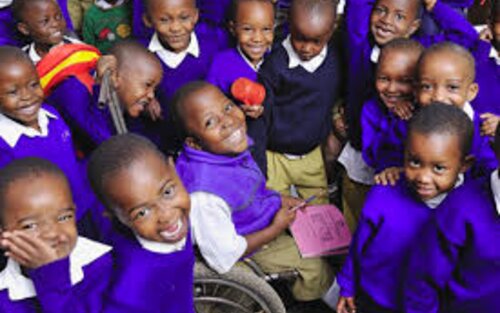Education for children with special needs to be much more than just extra time during examinations. Inclusivity entails a combination of factors ensuring a child with special needs functions and performs at his true level in the typical education system. One parent says, “I cannot change my child for the system but I will try and change the system for my child.”
Globally, international and national organizations for people with disabilities are leading the conversation for an urgent intervention in our education systems to leave no one behind. Education plays a major role towards empowering. Education is the medium in which the youth can realize their potential and talents. Education does not only teach but equips young people to think, create and be a vital asset to the community.
Some themes being pushed are “Transform education” and "Building Back Better”. With 'inclusion' becoming the new buzzword being used in political utterances there is little true understanding for its meaning. However, people with disabilities hold a deeper understanding of the definition which requires context and perspective.
According the Cambridge dictionary, inclusion is the art of including someone or something as part of the group. A specialized definition is the idea that everyone should be able to use the same facilities, take part in the same activities, and enjoy the same experiences as others, including those who have a disability or impairment.
For a long time we regarded inclusion as a strange concept associated with people with disabilities in special education. For inclusive education to occur it is necessary to consider a few things:
Firstly, the physical infrastructure and accessibility in our schools - ramps, tactile tiles, customized desks and tables. Can children with various impairments access every facility in the school compound? Ss the physical access welcoming?
Secondly, the availability of specialized teachers and resources who are trained to facilitate socialization and learning among children with different impairments. They may act as main teachers or support teachers.
Thirdly, the provision of learning resources and assistive devices to support learning and interpretation of school materials. Children with cerebral palsy might require laptops, writing devices, those with autism might require sensory rooms and tools.
Fourthly, the mental and attitudinal accessibility in our schools, with our teachers and fellow learners. How the others think and feel towards the learners with different abilities is a key determinant to how the learner with an impairment is included.
These are a few factors to consider in the implementation of inclusive education nationally. However, towards ensuring Sustainable Development Goal goal 4, we need to ensure inclusive and equitable quality education and promote lifelong opportunities for all, and for that calls for redefining inclusion to cater for all children to gain effective functioning skills equipping them to interact with the environment in various aspects at their own level.
Maria Njeri

